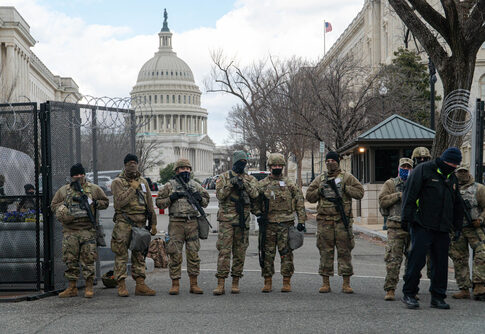President Trump’s sweeping deployment of the National Guard to 19 states represents a decisive move to restore law and order while reversing the chaos left by years of unchecked illegal immigration and federal inaction.
Trump’s National Guard Deployment: A Turning Point for Security
President Trump has authorized the mobilization of up to 1,700 National Guard troops across 19 states, an unprecedented step in the fight against illegal immigration and rising crime. The operation, confirmed by Pentagon officials, places the largest number of troops in Texas—a state long overwhelmed by surging border crossings and federal neglect. Guard members will support the Department of Homeland Security and Immigration and Customs Enforcement (ICE), providing essential assistance with data collection, case management, and transportation. Unlike previous limited border deployments, this initiative spans well beyond border states, reflecting the administration’s commitment to restoring constitutional order and upholding the rule of law.
The troops, operating under Title 32 Section 502F, remain under state command but are federally funded, striking a balance between state sovereignty and national priorities. This model ensures that governors retain operational control, which helps address legal concerns under the Posse Comitatus Act, while allowing for federal coordination and strategic direction. The deployment is not merely a show of force; it directly confronts the operational and logistical burdens local authorities have faced for years, empowering ICE and DHS to scale up their enforcement capabilities after years of resource constraints and policy roadblocks.
Historical Context: Contrast with Previous Administrations
While National Guard support for immigration enforcement has precedent, the scale and scope of this operation mark a dramatic escalation. Under the Biden administration, border enforcement was hampered by a patchwork of executive orders, sanctuary city policies, and a lack of federal-state cooperation, resulting in record-setting surges in illegal crossings and crime rates. Previous deployments, such as Operation Guardian Support in 2018, were limited to border regions and failed to deter the organized networks exploiting lax enforcement. By expanding the Guard’s mission to 19 states, the Trump administration is correcting course, signaling to both foreign and domestic audiences that America will no longer tolerate lawlessness or abdicate its sovereign right to control its borders.
This deployment also comes in the wake of legislative reforms, such as the recently signed “One Big Beautiful Bill Act,” which dramatically increased funding for immigration detention and enforcement. The law aims to reverse the destabilizing policies of prior years, restoring tools that prioritize the interests of American citizens, protect communities from crime, and ensure that federal resources are dedicated to upholding immigration laws—not undermining them for political gain.
Legal Structure and Federal-State Dynamics
The choice to deploy National Guard troops under Title 32 authority is both strategic and constitutional. Troops serve under the command of their respective state governors, not federal law enforcement agencies, which respects the constitutional balance between state and federal powers. This approach mitigates longstanding legal concerns over the use of military forces in domestic law enforcement roles, a principle enshrined in the Posse Comitatus Act. By providing federal funding and logistical support while maintaining state command, the administration ensures operational flexibility without violating legal norms—a critical safeguard for those who value limited government and constitutional order.
State governors, regardless of party, are now required to coordinate with federal agencies and accept support, closing loopholes that previously allowed sanctuary jurisdictions to evade cooperation. This realignment of authority and responsibility is a direct response to the constitutional crisis posed by open-border policies and selective enforcement of immigration laws in previous years.
Impact, Reactions, and What Comes Next
The immediate effect of the deployment is an expanded federal presence in immigration enforcement and public safety operations. ICE and DHS now have the logistical and administrative backing to ramp up removals, conduct detailed investigations, and manage the overwhelming caseloads that have accumulated over years of policy drift. For communities long plagued by crime and uncertainty, this operation is a welcome sign that the federal government is finally listening and acting on their concerns.
CHICAGO NEXT FOR MILITARIZATION?
'STAY OUT OF OUR CITY'
TRUMP DEPLOYING NATIONAL GUARD IN 19 STATES // Maher Sounds Alarm on Trump's 'Slow-Moving Coup'…— Eric Smith (@EricSmi19837108) August 24, 2025
However, the move has not been without controversy. Critics, including civil rights advocates and legal scholars, warn of the risk of overreach and potential civil liberties violations. Some claim that the deployment represents a “creeping federalization” of state security functions, while others see it as a necessary correction to restore order and enforce the law. Security analysts agree that the operation’s scale is unprecedented outside of disaster response, and that its success or failure will set a powerful precedent for future federal-state cooperation in domestic security matters. As planning and activation continue through the fall of 2025, the nation will be watching closely to see whether this bold strategy delivers on its promise to secure the border, restore order, and uphold the constitutional values cherished by millions of Americans.
Sources:
National Guard mobilizing in 19 states for immigration, crime crackdown
Trump deploys National Guard in 19 states in crackdown on immigration and crime


